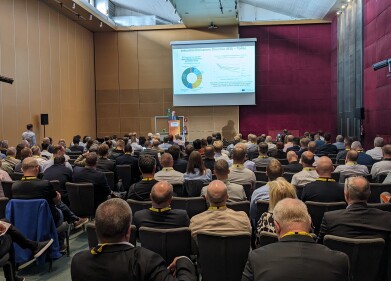Air monitoring
How Fixing Potholes Reduces Pollution
Feb 25 2019
Much has been made of the pollution caused by road transport, with the sector overtaking power plants as the biggest contributor to greenhouse gases (GHGs) in the UK last year. While the manufacturing industry is regulated to ensure that vehicles meet a higher standard of environmentalism than in previous years, less focus is concentrated upon the roads themselves.
Potholes and other damage to roadways exacerbates pollution problems, according to a new study from Rutgers University in New Jersey. The authors behind the paper tested out CO2 levels on car journeys on roads in a poor state of repair and compared them to ones that had been fixed via various different methods of asphalt preservation treatment. They showed that using a thin overlay of liquid asphalt could bring down GHG emissions by 2%.
A bumpy road
The poor condition of motorways, dual carriageways, B-roads and urban streets is a problem all over the globe, but it’s a particularly concerning one in Britain. A recent report found that the roads in the UK ranked abysmally in comparison to other developed nations, with the infrastructure in a poorer state than other countries such as Ecuador and Namibia.
Indeed, around 23,000 miles of asphalt in England, Scotland and Wales did not meet adequate standards of safety in tests conducted last year. That equates to 3% of A-roads and 5% of minor roads in England, approximately 10% of all roads in Wales and a whopping 30% of A-roads and 35% of minor roads in Scotland, signalling deep-set problems in the national infrastructure.
While that can translate into an unpleasant and even dangerous driving experience for road users, it can also make them use more fuel, thus resulting in increased emissions, as well as damage to the car itself, leading to expensive repairs. As such, avoiding damage to roadways is in the interest of everyone.
Prevention better than the cure
The authors of the study advocated for preventative maintenance, which keeps roads in top condition before potholes and other surface blemishes become a problem. After testing a number of different methods of asphalt treatment, the authors concluded that using a thin overlay of liquid asphalt to maintain road integrity was the best way to preserve their condition and could reduce carbon emissions by up to 2%. It could also cut costs to road repairs by almost a third by nipping the issue in the bud.
“The good timing of applying thin overlays depends on the road condition, not just the age of the road. Traffic and climate play important roles here. The roads with heavier trucks and very hot or cold climates deteriorate faster and should be repaired earlier,” explained Hao Wang, lead author on the paper. “Recently, pavement preservation — or preventive maintenance — has been used by highway agencies to extend pavement life, but little research has looked at its impact on the environment,” he went on.
Of course, preventative maintenance of road surfaces should comprise just one facet of a multipronged approach to tackling transport-related pollution. Pursuing technological and scientific innovations in environmentally-friendly road transportation is another crucial factor in curbing the harmful impact of this highly influential industry.
Digital Edition
AET 28.4 Oct/Nov 2024
November 2024
Gas Detection - Go from lagging to leading: why investment in gas detection makes sense Air Monitoring - Swirl and vortex meters will aid green hydrogen production - Beyond the Stack: Emi...
View all digital editions
Events
Jan 14 2025 Abu Dhabi, UAE
Jan 20 2025 San Diego, CA, USA
Carrefour des Gestions Locales de L'eau
Jan 22 2025 Rennes, France
Safety, Health & Wellbeing LIVE
Jan 22 2025 Manchester, UK
Jan 25 2025 San Diego, CA, USA



















